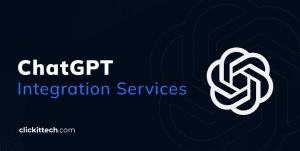What are Python frameworks? Is it the same as the Python coding language? First of all, Python is treated more like a language for machine learning (ML), data science, IoT (Internet of Things), and app development.
Now, to put it simply, Python frameworks are a collection of modules and packages that let developers write web applications and services fast and efficiently. This article will teach you about the most popular Python frameworks in high demand. So, let’s dive into the Python frameworks list!
The easy learning curve of the coding syntax and standard collection of libraries make Python a go-to choice for web technologies. This is why top brands like Google, Spotify, and Pinterest use it as their core programming language.
- Types of Python Web Development Frameworks
- What are the Best Python Frameworks?
- How do you Choose the Best Python Framework?
- Need Assistance Implementing a Python Framework?
- Wrapping Up
- FAQs
Types of Python Web Development Frameworks
Essentially, you can categorize the Python web development frameworks into three types. But what makes each class unique? Let’s walk you through it:
Full-stack frameworks
Also known as an enterprise framework, a full-stack framework is a one-stop solution for all your development needs. These have built-in libraries that are configured to work seamlessly with each other. They also support frontend interfaces, backend services, and the integration of databases.
Microframeworks
Microframeworks are minimalistic frameworks with limited features and functionalities. Compared to full-stack frameworks, microframeworks are lightweight. A lightweight and minimalistic web app framework might be enough if you were to build an application with only the essentials. They lack additional features and functionalities, such as a database abstraction layer, web template engine, form validation, and input validation. But the components they offer are enough for building an application.
Asynchronous framework
An asynchronous framework is a unique microframework type that lets developers manage and handle a large set of concurrent connections. The latest addition to the Python framework, Bandwagon, is an asynchronous framework. These frameworks feed on the Asyncio library of Python.
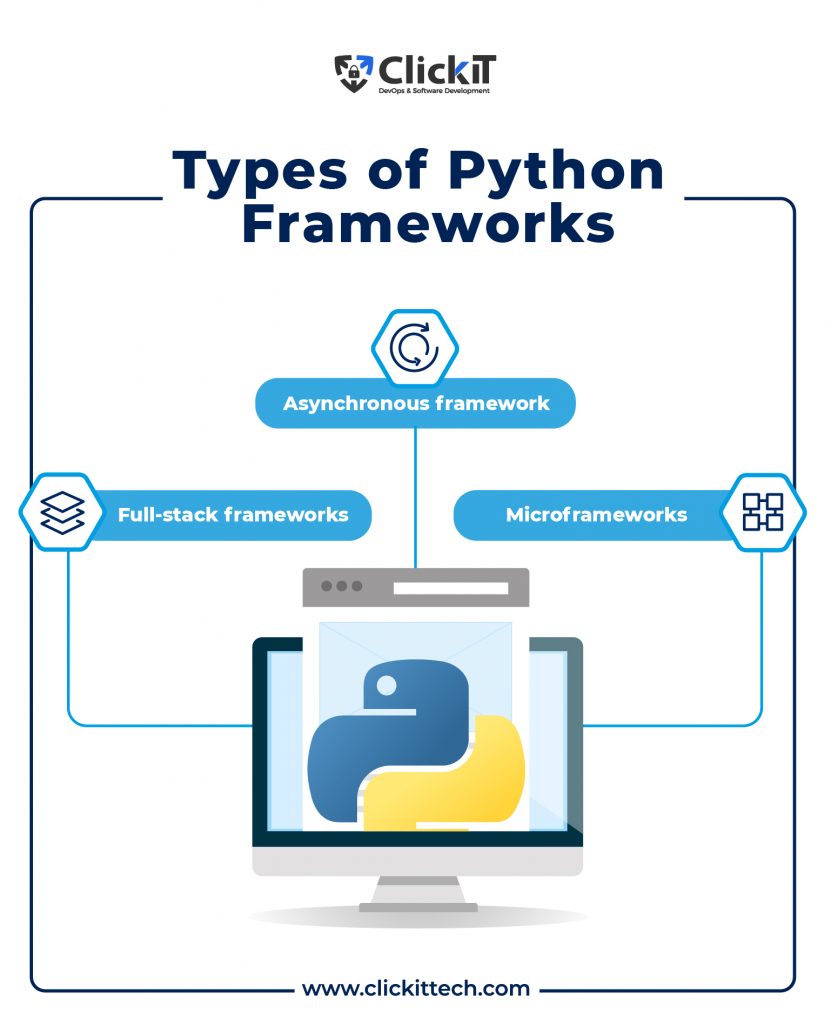
Keep in mind the various categories of Python frameworks because next, we will discuss the necessity of using frameworks.
Read our blog with the top web development frameworks.
What are the Best Python Frameworks?
We have selected the eight most popular Python frameworks for web and app development. Each of them has its unique features and caters to different needs.
The following is a list of some of the best Python frameworks based on popularity and ability to provide rapid web and app development:
- Flask
- Django
- Pyramid
- Web2py
- Falcon
- FastAPI
- Tornado
- Dash
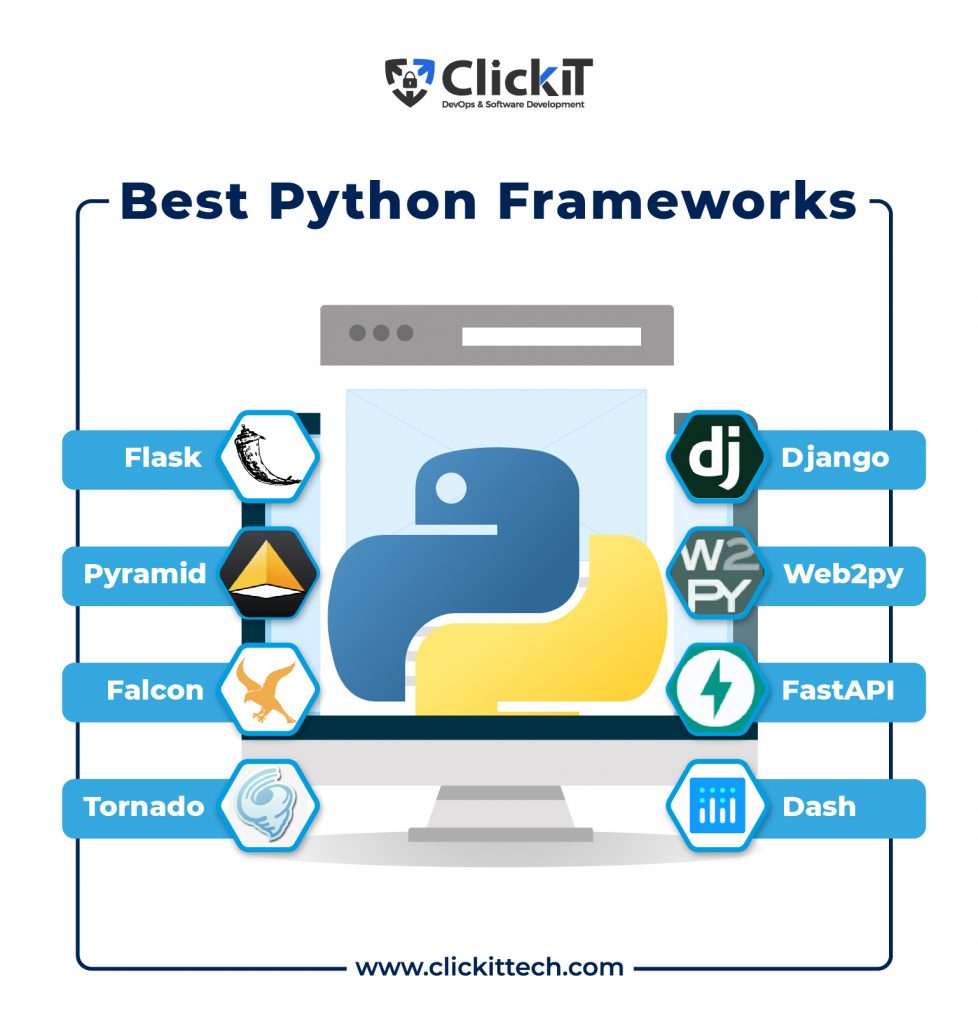
Flask
Flask is classified as a microframework. Why? It does not need libraries or tools. It does not have advanced features, such as form validation and database abstraction layer, but it contains many extensions. When experienced developers need a simple web server that is fast enough to serve a simple website, they would most likely resort to Flask.
Check out our blog about How to dockerize a flask python application.
Pros
- Easy to use and learn
- Simple yet highly powerful
- Can get up and running exceptionally fast
Cons
- The MVP development is slow in most cases
- For complex systems, it would need higher maintenance costs
Django
One of the highly popular Python full-stack frameworks is Django. It is a high-level Python web framework that allows rapid development and pragmatic and clean design. Whether your project is just a kick-off idea or a full-fledged business.
Pros
- Backward compatible, which means it offers the provision of working with the older versions and older formats
- Has a large community of developers that bear inside knowledge
- DevOps compatible
Cons
- It is monolithic, which can be a feature for some developers but is a drawback.
- Not the right choice for small projects as all the functionalities come with tons of codes.
Flask vs Django: Read the full comparison of these powerful frameworks.
Pyramid
Pyramid is a Python app development framework, flexible and one of the most popular python frameworks in the sense that it scales for medium-sized and small-sized web applications. And just like Flask, it is easy to deploy. But unlike Flask, it provides a large number of out-of-the-box features.
Pros
- Highly flexible
- Makes smart development and documentation of a complex application an easy task
- Offers a wide range of scalability
Cons
- For developers with low experience in coding, it can be a little tricky to understand
- Does not have as many advanced extensions that are present in other frameworks
Web2py
Web2py is a highly user-friendly framework and even comes with a web-based IDE. The IDE is also packed with a debugger, code editor, linter, and one-click deployment tool. Although the name is not exceptionally attractive or creative, you would be surprised to know that it is basically a teaching tool.
Pros
- A perfect pick for beginners
- Supports multi-view controller (MVC) architecture
- Comes with useful batteries
Cons
- Does not work with the asynchronous syntax of Python 3 yet
- Lacks an extensive community of web developers
Falcon
Falcon is blazing fast, and the code base is highly optimized to handle a large number of requests. The framework also has an object-oriented approach. So while looking for popular Python frameworks, Falcon would be the right choice if you want something speedier than most others.
Pros
- High performance yet pretty lightweight
- Exceedingly fast
- Highly customizable
Cons
- Not an appropriate pick for serving frontend pages
- Focused on building representational state transfer application programming interface (REST APIs)
FastAPI
FastAPI is a good example of a fast framework that offers more than just speed. It has a lot of simplicity that you will find in Flask, but it delivers high performance. And as the name states, this framework is more focused on allowing developers to create speedy APIs based on the OpenAPI standards.
Pros
- Has async support
- Makes validation data types from the developer easy
- Offers an autocomplete feature
Cons
- Has a comparatively smaller community
- Does not have many external educational materials
Tornado
Billed as an asynchronous networking library, the Tornado Python web framework should be on your list if you want to handle many active server connections. It utilizes a non-blocking network-io. And it is a savior for web applications where long polling and a high amount of active connections need to be maintained.
Pros
- Provides a great amount of support for real-time functionality
- Provides high overall performance
- Reasonably fast
Cons
- Does not have object oriental mapping (ORM)
- It’s pretty much a niche tool that caters to real-time apps only
Dash
Dash is an open-source framework that is for building analytical web applications. It offers a powerful library that simplifies the data-drive application development process, and it is highly useful for Python data scientists with little familiarity with web development.
Pros
- Features interactive dashboards
- Flaunts an extensive amount of documentation
- Has a very active community
Cons
- Basically, a paywall for enterprise features
- Requires manual port of the components if you are working with React.js
The next option might interest you if you are new to Python frameworks and looking for a ready solution.
How do you Choose the Best Python Framework?
Before diving into the best and most popular Python frameworks list, you need to know what to factor in before choosing a Python app development framework.
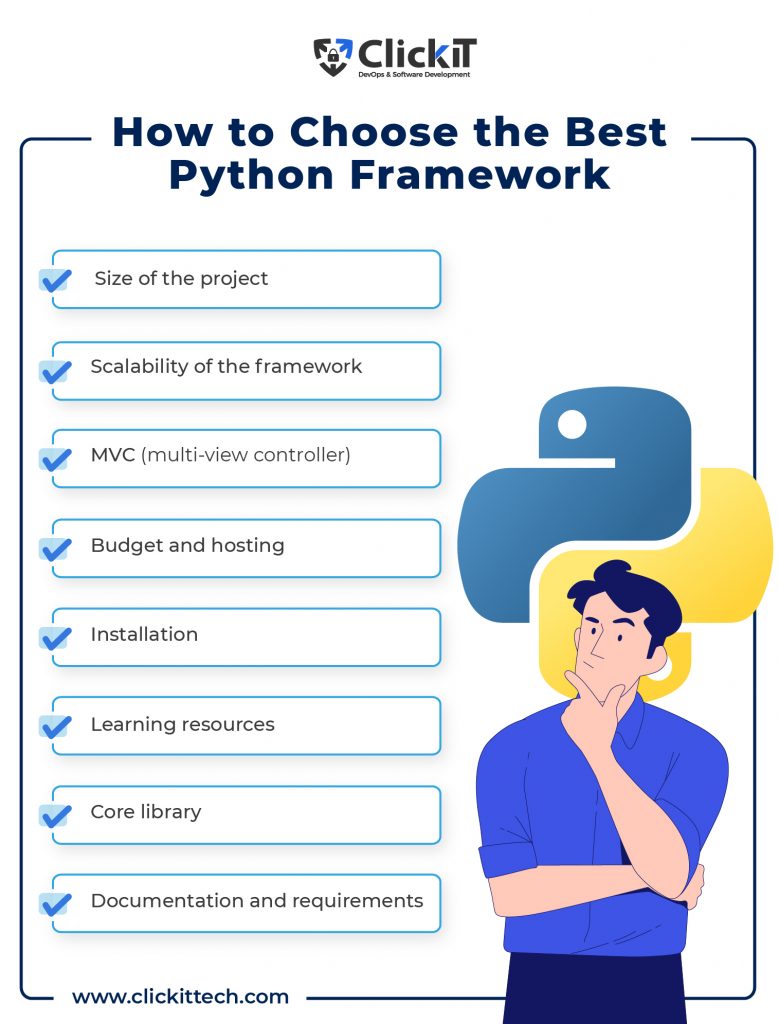
- Size of the project. Full-stack frameworks will be the best fit if you aim to develop a large-packed system with advanced modules and features. On the contrary, microframeworks would be best if the project has low requirements.
- Scalability of the framework. Check whether the framework can scale horizontally or vertically. This consideration will be highly relevant if your websites will run on numerous servers and will continuously handle heavy traffic.
- MVC (multi-view controller). It is common in all Python frameworks, and its main task is to maintain the logic (controller), data (model), and UI (view). Eventually, MVC allows developers to write codes in a better format, which will ultimately convert to qualitative projects.
- Budget and hosting. It is normal to aim to develop a cutting-edge platform. Likewise, it is natural to worry about the budget. Dedicated hosting is superior, but the cost is higher than shared hosting. On the other hand, shared hosting is comparatively cheaper but offers mediocre plugins and modules.
- Installation. One of the crucial factors in terms of adopting a Python framework is the installation steps. Some fast and highly efficient frameworks require developers to complete a complicated installation process. These demanding installation steps can indeed impact the application itself because you might not be able to deploy it to the production server.
- Learning resources. You should put learning resources on your consideration list. Developers benefit the most when they select the one with the least learning curve. Remember that each Python framework has its dictionary and terms. Consider them before choosing one.
- Core library. You should emphasize the core library while choosing a Python framework. And when it comes to the evaluation core library, consider whether it provides the flexibility of writing a piece of code while offering the ability to tinker with it if you want more options or control over your program.
- Documentation and requirements. It would be best if you focus more on frameworks with extensive documentation. Look for examples, sample codes, tutorials, snippets, and blogs. On the other hand, in terms of requirements, it will depend on the project. Check what the project demands and choose the one that is best suited for it.
After covering the most important factors, it’s time to check some of the most popular Python frameworks.
Need Assistance Implementing a Python Framework?
So, with the knowledge of the best python app development frameworks, what do you do next? You can check out the services of a Python development company like ClickIT. Whether a custom Python project or one that uses a content management system (CMS), mobile app development, or migration and upgrade of deployed projects, ClickIT can do it all!
Among the most noteworthy features, the team employs a full backend development process, can provide support with banking software and algorithm systems, and develops API by leveraging the Python language. In short, ClickIT is a top Python development team you can completely rely on!
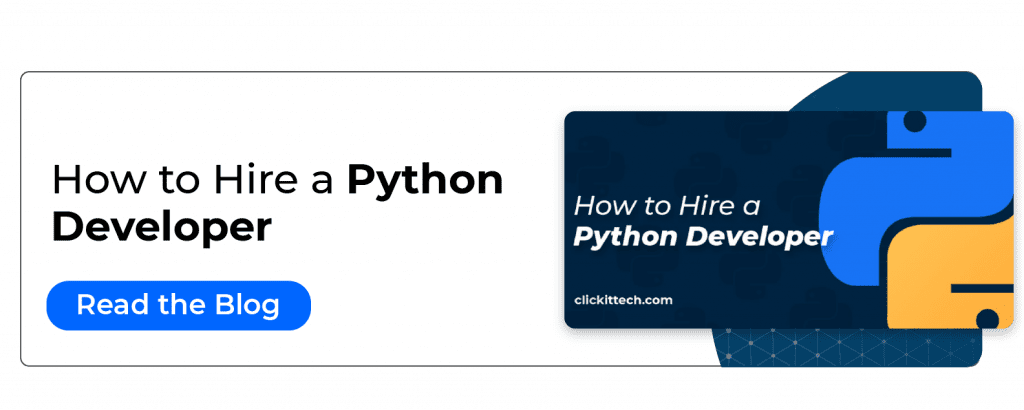
You can also read the blog on Medium
Python Frameworks FAQs
Flask and Django are at the top spots for the best Python frameworks. But remember, you should consider all the necessary factors before choosing a framework.
Flask is definitely a good start if you are getting into web development. But Django has loads of out-of-box features, reducing the time to build intricate web applications.
Yes, Netflix utilizes Flask to bind all previous segments together. It also uses Jupyter Notebook, which is an open-source web IDE.
Yes, Google utilizes Django. For example, the Person Finder from Google is written in Python and uses the Django framework.





